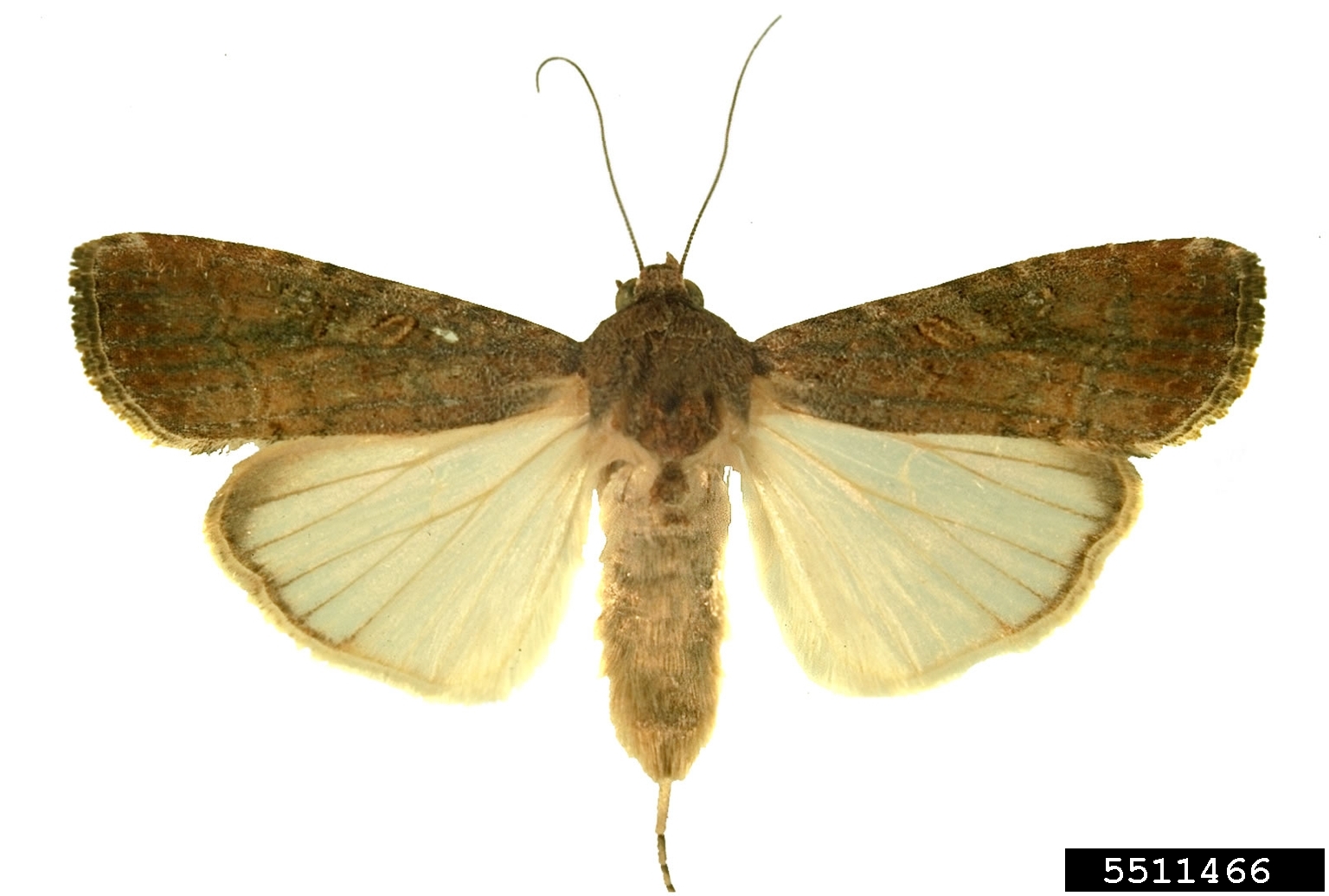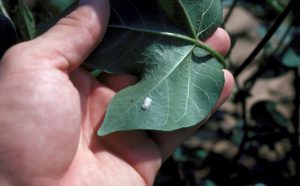
Minor use permits: Fall armyworm
26 May 2020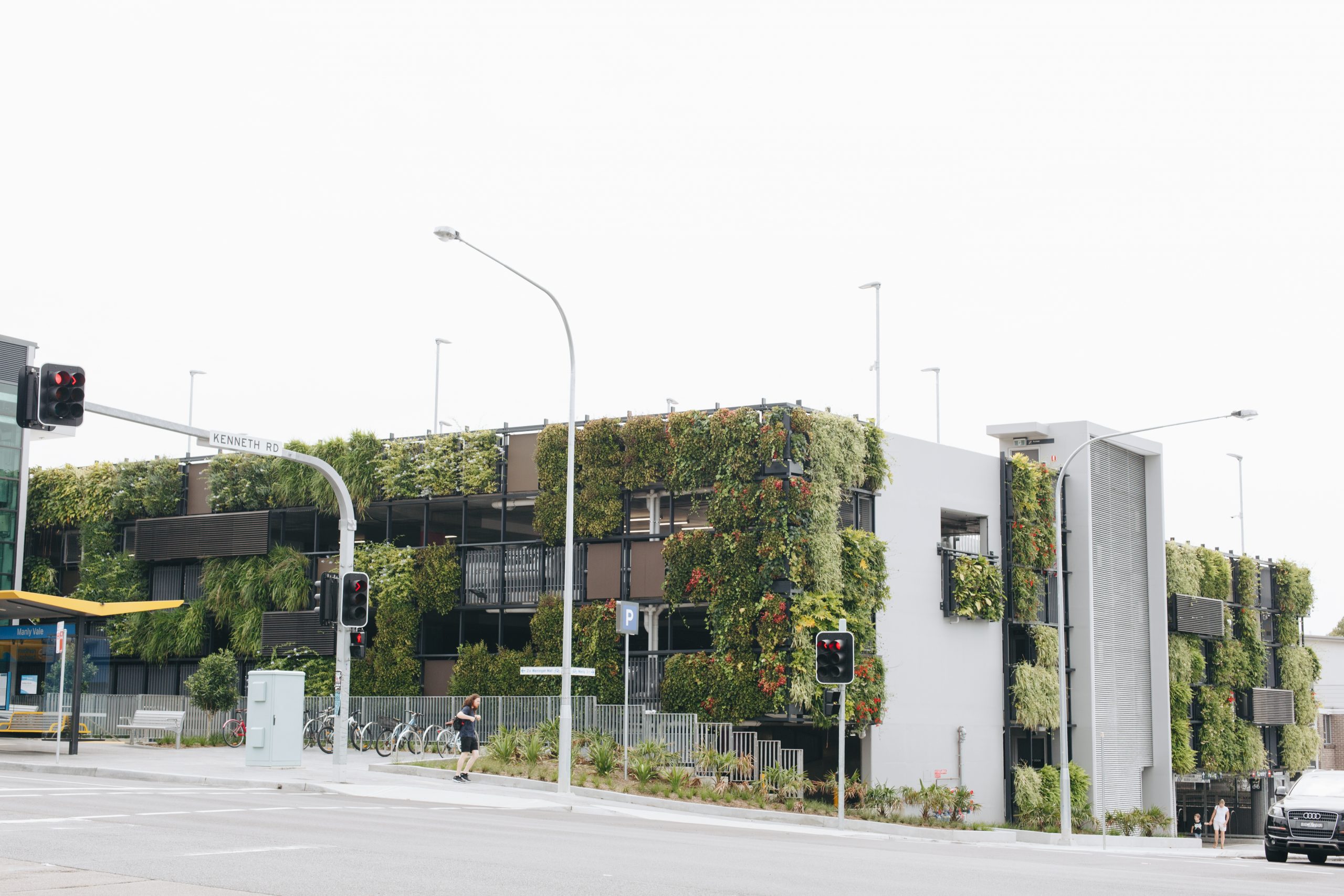
‘It’s time to grow up’ with urban greening in-focus
3 June 2020In February this year, fall armyworm was detected on mainland Australia for the first time and has since spread across Queensland, Northern Territory and Western Australia. Vegetables Australia – Winter 2020 provides the latest on these detections and what vegetable growers need to know.
Fall armyworm is an invasive pest that has been reported to feed on more than 350 plant species, and impacts economically important cultivated grasses such as maize, rice, sorghum, sugarcane and wheat, as well as fruit, vegetable and cotton crops. It is native to tropical and subtropical regions of the Americas, and since 2016 has spread to Africa, the Indian subcontinent, China and South East Asia.
In January this year, fall armyworm was first detected on two Torres Strait islands and confirmed in early February. The first mainland detection in Australia was at Bamaga in February.
Subsequent detections of fall armyworm have occurred near Croydon, South Johnstone, Tolga, Lakeland, Mareeba, the Burdekin region, Bowen, Richmond, the Emerald region, and Bundaberg in north-central Queensland.
Fall armyworm has also been found in the Northern Territory (Katherine) and Western Australia (Kununurra, Broome, Carnarvon). At the time of writing, the most recent detections were near Biloela, Mackay and Dysart in Queensland.
As fall armyworm is new to Australia, we are relying on information and experience from overseas until locally generated data can confirm or refine this information. The following have been reported overseas as hosts: apple, banana (could be a minor issue), citrus, mango (less preferred), melon (but no crop loss expected), onion, potato, processing tomato, table grape, sweet corn, eggplant, beetroot and cucurbits. It is expected that sweetcorn is most susceptible to damage from fall armyworm.
The Consultative Committee in Emergency Plant Pests has determined that it is not technically feasible to eradicate fall armyworm from Australia.
Fall armyworm moves and reproduces fast, and feeds on a very wide range of plants. It is well-established in our nearest neighbouring countries.
More details about the fall armyworm, including pest identification, can be found in the summer 2019/20 edition of Vegetables Australia.
Spread and activity
The adult moths are capable of flying long distances aided by wind currents. All life stages can be moved on infested plant material.
Adult moths are nocturnal and are most active during warm, humid evenings.
Fall armyworm larvae are most active during late summer and early autumn months, but can be active year-round in tropical areas. Fall armyworm is most likely found in warm, moist regions where winter temperatures exceed the 10-degree threshold for survival.
Signs and symptoms
Regular crop monitoring for both damage and the presence of FAW will be important in avoiding infestations going undetected.
Symptoms of fall armyworm include leaf damage such as pinholes, windowing, tattered leaf margins and defoliation of plants.
Growers should also look out for tiny larvae, less than 1 mm, that are more active at night, eating pin holes and transparent windows in leaves and bigger larvae grazing on leaves, stems and fruit, and leaving behind insect excrement.
In grass-like plants, larvae are often in plant whorls where leaves branch from the stalk.
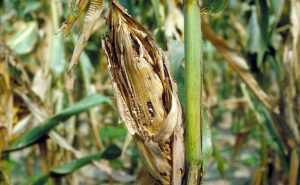
Damage to corn ear inflicted by fall armyworm. Image courtesy of Billy R. Wiseman, USDA Agricultural Research Service, Bugwood.org.
Managing an outbreak
Early detection is essential. Regularly check all your crops for unusual insect activities.
Key to the control of any pest is an integrated pest management approach. The Queensland Department of Agriculture and Fisheries (DAF), in collaboration with industry, is working to identify strategies and tactics for the medium to long-term response.
It is essential with any pesticide use for fall armyworm control to consider the implications for chemical resistance development in other pests that may be exposed (e.g. Helicoverpa) and the potential impact on natural enemies. Fall armyworm is also known to rapidly develop pesticide resistance.
The APVMA has issued a number of permits for the use of certain chemicals for the control of fall armyworm. It is important to check for the latest chemical permits applying to fall armyworm using the APVMA’s permit portal – search for ‘fall armyworm’ and check the ‘pest/purpose’ button. The portal can be found at portal.apvma.gov.au/permits.
Monitoring and surveillance
Pheromone traps have been deployed by DAF at sites throughout Queensland, including: Burdekin, Bowen, Mackay, Richmond, Rockhampton, Longreach, Kingaroy, Emerald, Biloela, Bundaberg, Gayndah, Nambour, Dalby, Goondiwindi, Gatton, the Darling Downs and Brisbane.
Rural R&D for Profit program, iMapPESTS: Sentinel Surveillance for Agriculture, has been trialling smart lure traps alongside the sentinel with aim to provide fast, accurate detection of the fall armyworm. The lure traps feature on onboard imaging system that relays images of the lure trap to a secure cloud storage space and have been developed by Western Australia’s Department of Primary Industries and Regional Development, in collaboration with South Australia’s Research and Development Institute and Sugar Research Australia.
In conjunction with industry, DAF will continue surveillance and monitoring of the spread of this pest.
In the medium- to long-term DAF will work with industry to:
- Identify the crops most favoured by the pest and determine economic thresholds to guide management decisions.
- Assess appropriate chemical and biological controls.
- Help industry minimise and manage any pesticide resistance.
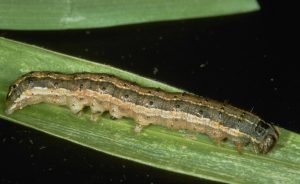
A larva of the fall armyworm (Spodoptera frugiperda). Image courtesy of Frank Peairs, Colorado State University, Bugwood.org.
Legal requirements
Fall armyworm represents a new biosecurity threat for Queensland (and Australia) and any suspected detections should be reported to the Exotic Plant Pest Hotline or your local biosecurity department.
It is not currently listed as prohibited or restricted matter in Queensland’s biosecurity legislation, however there are requirements under the Biosecurity Regulation 2016 in relation to the movement of plant material that may carry pests.
Far-north Queensland is a high-risk area for the introduction of plant pests and diseases from nearby Papua New Guinea and Indonesia. The spread of pests into the rest of the state poses a significant risk to our agricultural industries.
Two far northern biosecurity zones have been established in the northern half of Cape York Peninsula to control movement of risk items that may carry pests and diseases southwards to production areas. Plants, plant pests, soils and related equipment must not be moved out of these zones without a biosecurity instrument permit.
Advice for growers and producers
Growers and producers should already have strong on-farm biosecurity measures to protect their crops from pests and diseases. Crops should be monitored for signs of leaf damage leading to defoliation of the crop and report suspected sightings to assist with early detection, and potential treatment. Good farm hygiene should be implemented for weed control to remove hosts that could build populations.
If it breeds in very large numbers and then consumes all of its preferred hosts, it develops an ‘army’ like phase, where it can then attack anything that is in its path. If this were to occur during flowering it could be an issue, but we believe this would be a rare event.
Video: Fall armyworm and what to look for
The AUSVEG Biosecurity team has recently created a video that provides an overview of the fall armyworm. This including the damage it may cause, what to look for and how to report it.
The video resource was made available via the Farm Biosecurity Program, funded by the Plant Health Levy. To watch the video on YouTube, please click here.
Find out more
Any unusual plant pest should be reported immediately to the relevant state or territory agriculture agency through the Exotic Plant Pest Hotline (1800 084 881).
Further information detailing fall armyworm advice and management can be found here.
This article first appeared in the winter 2020 edition of Vegetables Australia. Click here to read the full publication.

